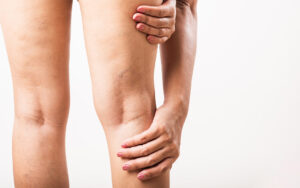Orthopaedic health is essential for everyone, including women who often face unique challenges related to their musculoskeletal well-being. In this article, we’ll explore the most common orthopaedic problems women encounter, delve into orthopaedic difficulties, discuss treatment options, and examine the underlying causes of these issues.

What Are the Most Common Orthopaedic Problems?
Orthopaedic problems encompass a wide range of conditions, but some of the most common issues women experience include:
- Osteoporosis: A condition characterized by weakened bones, making them more prone to fractures.
- Arthritis: Various forms of arthritis, such as rheumatoid arthritis and osteoarthritis, can affect joints and cause pain and stiffness.
- Tendonitis: Inflammation of tendons can lead to discomfort, especially in areas like the shoulder and wrist.
- Carpal Tunnel Syndrome: Often associated with repetitive hand and wrist motions, this condition results in numbness and tingling.
What Are Orthopaedic Difficulties?
Orthopaedic difficulties refer to the challenges and limitations that arise due to orthopaedic problems. These difficulties can affect a woman’s daily life, making it essential to seek timely treatment and solutions. Orthopaedic difficulties may include:
- Difficulty in performing routine tasks due to pain or reduced mobility.
- Challenges in maintaining an active lifestyle, which can lead to decreased physical fitness.
- Emotional and psychological stress resulting from chronic orthopaedic issues.
What Is the Treatment for Orthopaedic Problems?
The treatment for orthopaedic problems depends on the specific condition and its severity. Common treatment approaches include:
- Medications: Pain relievers, anti-inflammatory drugs, and disease-modifying medications may be prescribed to manage symptoms.
- Physical Therapy: Targeted exercises and physical therapy can improve strength, flexibility, and joint function.
- Braces and Supports: Depending on the condition, braces, splints, or orthotic devices may be recommended to provide support and reduce strain.
- Injections: Corticosteroid or hyaluronic acid injections can help alleviate pain and inflammation.
- Surgery: In cases of severe damage or joint degeneration, surgical interventions like joint replacement or arthroscopy may be necessary.
- Lifestyle Modifications: Lifestyle changes such as maintaining a healthy weight, regular exercise, and a balanced diet can play a significant role in managing orthopaedic conditions.
What Causes Orthopaedic Problems?
Several factors can contribute to orthopaedic problems in women, including:
- Hormonal Changes: Hormonal fluctuations, particularly during menopause, can affect bone density and increase the risk of osteoporosis.
- Repetitive Movements: Certain occupations and activities that involve repetitive movements can lead to overuse injuries.
- Genetics: A family history of orthopaedic conditions can increase the risk of developing similar issues.
- Lifestyle Factors: Sedentary lifestyles, poor nutrition, and smoking can all contribute to orthopaedic problems.
- Aging: The natural aging process can lead to joint degeneration and other orthopaedic issues.
In conclusion, women’s orthopaedic health is a critical aspect of overall well-being. While common orthopaedic problems can pose challenges, they are often manageable with the right treatments and lifestyle modifications. Early diagnosis and proactive management can help women maintain an active, healthy, and pain-free life. If you’re experiencing orthopaedic difficulties, consult with a healthcare professional to explore suitable treatment options tailored to your specific needs.

